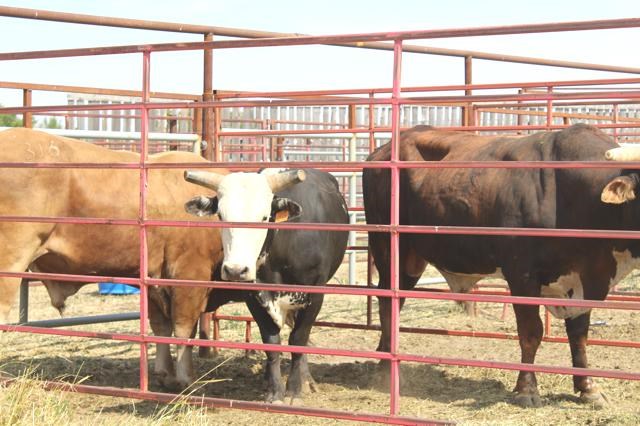Last year in late September news rocked the beef industry that a cow from a herd in Alberta tested positive for Bovine Tuberculosis. This set off a chain of events, including months of investigations, the quarantine of 26,000 cattle in Alberta and Saskatchewan and quivers in the beef industry.
One year later the investigation is still on-going and the Canadian Food Inspection Agency still doesn’t know where this strain of TB originated. Although only six animals have tested positive – the index cow and five others, about 11,500 animals had to be destroyed. A year later, only 10 premises with about 1,100 animals remain under quarantine, while 97 have been released from quarantine.
The Assiniboia Times spoke to Bovine TB expert, Rick Davies, area chief inspector for Western Canada for the CFIA, about this Bovine TB outbreak, the investigation and its aftermath for the beef industry. When another cattle disease, BSE, was first detected in Canada in the 1990s, there was a lot of panic among producers and markets reacted. Unlike this situation, the TB investigation was more controlled with a lot of information made available. This case of Bovine TB proved to be more complex. “TB is unlike many of the diseases. It is slow moving. The government and producers have worked decades to eliminate it,” Davies said.
Bovine tuberculosis is a contagious disease of both animals and humans caused by the bacterium mycobacterium bovis. Just like in humans, cattle can be infected and never show any symptoms, or it could take years for symptoms to develop. “It’s not unexpected that the pace is slow moving,” he added. Bovine TB is a reportable disease in Canada. This means that all suspected cases must be reported to the Canadian Food Inspection Agency.
The process of dealing with this outbreak and the reaction from government, cattle associations, producers and international markets was also very much different than the situation with BSE. Canada has status as a “Bovine TB-free” country from the World Organisation for Animal Health (OIE). Because of the unique nature of the disease, the OIE recognizes that once every four years a country can have a case of Bovine TB and still retain its status. The OIE has one eye on Canada’s investigation, but it’s not expecting any unusual finds given Canada’s rigorous testing and containment process.
Notably, since the news broke last year about the Bovine TB case, the marketplace has seen little interruption. Most of Canada’s international beef customers have TB control programs, such as the U.S. and Europe. In fact, potential new customers are not scared away by this incident. New markets for Canadian beef have opened up in China and the Far East recently. Davies says that the market impact has been minimal partly because Canada has developed good relations with its foreign trading partners. It has been very open about the investigation process which has lent confidence to the marketplace.
The CFIA has also been very open with producers and cattle associations in Alberta and Saskatchewan with ongoing discussions and weekly reports. Both the industry and consumers understand that TB investigations and testing are quite slow.
Davies explained that there are three major phases to this TB investigation. Phase one was directed at identifying the origin and spread of the disease and containing it. Animals were tested and some were destroyed. The bulk of this containment phase took place in the fall and winter of 2016 with the quarantine of 26,000 cattle located on dozens of premises. “The good news was that there was no further spread,” Davies added. He pointed out how the investigation was complicated by the co-mingling of animals and movement to different premises.




